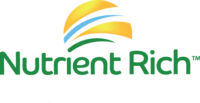< See Part 1 of the are you really eating healthy series.
For most people healthy salads, aren’t really healthy.
How many times have you been out to lunch or dinner and ordered a salad as a “healthier” alternative? Now think back and consider  how many of these “salads” were actually heaping bowls overflowing with hundreds of calories of chicken and cheese, with a salt and oil-laden dressing on top of maybe 10-20 or so calories of lettuce, spinach or romaine with a few present tomatoes and carrots.
how many of these “salads” were actually heaping bowls overflowing with hundreds of calories of chicken and cheese, with a salt and oil-laden dressing on top of maybe 10-20 or so calories of lettuce, spinach or romaine with a few present tomatoes and carrots.
When you think that one pound (16 oz) of micro- nutrient-rich leafy / green vegetables is only 100 calories, and grilled micronutrient-poor chicken is weighing in at 250 calories for only 4-5 oz (approx.)… then consider the added calories of cheese and oil at a whopping 120 calories per tbsp., both of which contain saturated fat and cholesterol that our bodies do not need from dietary sources, which can clog our arteries and veins, and the added sodium which only increases our blood pressure, which promotes heart attacks and strokes (2 of the top killers in the US, to the tune of over 1 million people per year [2]; that typical salad doesn’t seem like such a healthy alternative any more, does it?
Ordering that salad pictured on the right, at a restaurant, whether you put the dressing on the side, or not, is a prime example of a trick we have all fallen for, at one time or another, that makes us think we are eating “healthy,“ when we’re not.
So what do healthy salads really look like?
Here is a black bean mango salad that is considered “nutrient rich.” It does not need to be vegan or even vegetarian, and can include smaller amounts of animal products, but it does need to be mostly nutrient rich, vegetables, fruits, beans, nuts or seeds, and maybe some intact whole grains. This would be a salad that follows the top 3 golden rules of healthy eating.

When we talk about the chicken above being “nutrient poor” food we are coming from the standpoint that animal-based foods are rich in some nutrients but are missing whole categories of others. They also contain substances like cholesterol and saturated fat that the body does not need from dietary sources. When these foods form the basis of your salad, at the end of the day is’t not going to be one of the healthy salads we are talking about below.
It is recommended that healthy salads be 10% or less animal foods by calorie, if you eat them. Like a condiment.
Examples of micronutrient-poor foods include:
- Fish
- Low Fat Dairy
- Chicken and Beef
- Eggs
There is a another class of foods that are actually nutrient barren, which is why small amounts of animal products, even though micronutrient poor, are likely ok because they at least include some vitamins and minerals. “Nutrient poor” does not mean nutrient barren. But it also explains why you don’t want so-called “healthy salads” to be based on chicken and cheese, and no one of course, would ever make a salad out of junk food.
You want healthy salads to be based in leafy and green vegetables. That’s what makes healthy salads, super healthy!
When we are talk about eating nutrient rich healthy salads, what we are really saying is that healthy salads are based on plant foods that are rich in virtually all of the nutrients your body needs to function, stay healthy and perform well, including protein. They also have fiber and phytochemicals, and they do not contain substances your body does not need. It is recommended that you maintain a diet that is made up of at least 90% or More Plant Based Nutrient-Rich foods, meals and menus for the best all around healthy results.
Examples of these superfoods include:
Part 3 is coming up.
2 http://www.cdc.gov/nchs/fastats/deaths.htm
